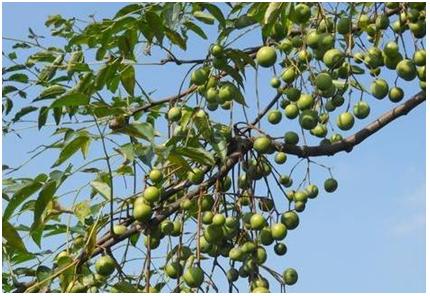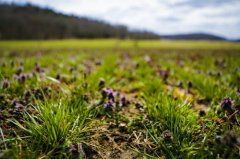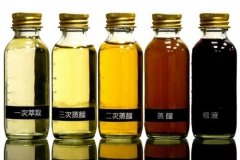Neem: can neem seed extract kill insects? Is neem oil effective in killing insects?
Have you heard of neem insecticides? This is an insecticide made from insecticidal ingredients extracted from plants.
The development and use of neem insecticides seems to have become a world trend. I can see that neem has been used as a road tree in some places in Thailand, and neem seedlings are widely available in flower markets. They call neem "Neem". A meter-high Neem seedling sells for NT $40, or NT $32, which is still cheap. In Malaysia, see its monthly magazine "Agriculture and Animal Husbandry World", which continuously introduces neem, and they are translated as "Peace Tree", which seems to be promoted in the direction of health herbs.

Neem, a dazzling new star of insecticidal plants
Neem (Azadirachta indica A. Juss), also known as Indian neem, is an evergreen tree native to tropical regions such as Myanmar and India. It is generally 15 to 40 meters tall and belongs to the genus Meliaceae in botany. It is distributed and cultivated in southern Asia, South America and many other regions except for its origin, but it still has the highest yield in Asian countries such as India. It can grow in mountains about 700 meters above sea level in the tropics and subtropics. In recent years, it has been promoted and planted in more than 70 countries through introduction. It is said that there are seedling operators in southern Taiwan who have imported seeds twice, but unfortunately they have not been successful.
The quick effect and low price of chemical synthetic pesticides have doubled agricultural production overnight and solved many famines, but its damage to the environment and its far-reaching impact on ecology are even more shocking. Today, when the world is shouting to protect the natural ecology, countries around the world are more cautious and hesitant about the production and use of chemical synthetic pesticides. However, food is the most important thing for the people, and in the face of a growing population and a relative shortage of natural resources, increasing agricultural production is still a necessary means for governments to feed their people. Therefore, compared with chemical synthetic pesticides, botanical pesticides with the advantages of not polluting the environment, overcoming drug resistance of pests, stimulating growth, convenient processing of local materials, simple manufacturing methods and low cost have been paid great attention in recent years. Many countries have invested a lot of human and financial resources to actively develop.
The use of neem can be traced back to more than two thousand years ago. at first, it was only used in medicine for a long time. As an insecticide, azadirachtin (azadirachtin) was successfully separated from azadirachtin by Butterworth and Morgan in 1968. So far, the chemical structures of ten analogues have been identified, commonly known as azadirachtin A, B, C, D, E, F, G, H, I, J, K, L. Among them, the content of azadirachtin An in neem seed extract is the highest, while the content ratio of azadirachtin B is 20%. It is generally believed that azadirachtin E has the strongest growth regulatory activity.
Azadirachtin is similar to some bitter compounds commonly found in plants such as Melialeae, Rutaceae and Simaroubaceae. These substances with various biological activities, collectively known as limonoides, are widely used in health care, animal husbandry and veterinary medicine, food industry, detergents and other daily chemicals. It also plays an important role in the prevention and control of crop diseases and insect pests. The systematic study on the insecticidal effect of limonin began in the 1930s. From 1926 to 27, a major locust plague swept western India. Neem showed good deworming activity to avoid trouble. As a result, some scientists noticed the insecticidal effect of this "Indian sacred tree", but in the following 30 years, progress was slow. After entering the 1960s, Germany, the United States and India and other countries have invested a lot of manpower and material resources. Set off a research boom, four international neem conferences were held in Germany (1980, 1983), Kenya (1986) and India (1993), which made rapid progress and achieved considerable results. In 1985, Margosan-O, the first commercial drug with azadirachtin as the main ingredient, was first registered in the United States and became the second botanical drug approved for use after pyrethroid. In the late 1990s, neem insecticides such as Azatin, Turlex, Align, Neemrich, Neemix, Neemgaurd, Nemidin, Nemol, Nemicidine, Margocideck OK, Ackook, RD-9 (Repelin), Neemark, Azalan and Trilogy have been introduced to Taiwan. Azalan is a powder from Sri Lanka and is still in the trial stage, while Trilogy is an oil and is patented by an American company. Nongyou Company has officially promoted it as an organic pesticide substitute under the trade name of "fragrant bitter neem oil".
Azadirachtin and azadirachtin preparation have many effects on insects, such as anti-feeding, repelling, regulating growth and sterilization and so on. due to different active components and dosage, azadirachtin can show different biological activities against insects. Azadirachtin is recognized as the most active antifeedant in the world, and it has the most stable activity in insect growth regulation, showing a good dose-effect relationship. What is more valuable is that in addition to insecticidal activity, it also shows bactericidal and nematicidal activity. The United States has developed insecticides mainly composed of azadirachtin, so "neem" is regarded as the representative of botanical insecticides and the most suitable resource plant for chemical development.
Recently, during his holiday, the author has visited Thailand twice to inspect plant resources. He has learned that apart from planting neem in large quantities in the country of origin, Australia and African countries are also vigorously promoting it, and many countries are even encouraging investment in planting by reducing income tax. Generally, neem, which is 10 years old, can produce 50 kilograms of fruit per year, 30 kilograms of seeds can be obtained by removing the seed coat, and 6 kilograms of oil can be extracted. According to the data in 1995, the price of this oil is 375 dollars per kilogram, which is much higher than the pyrethrum oil of 75 dollars per kilogram. Moreover, the 24 kilograms of oil meal left from the oil is the first-class organic fertilizer. In some neem gardens that have not reached fruiting age, leaves are collected, dried and ground, and used as both pesticides and fertilizers.
In short, it is said that a foundation in Taipei is recently preparing to import 100 grams of neem seeds from India, which, if successful, will be promoted as a family greening and insect-resistant plant. However, neem seeds with a strong smell of garlic have a very short lifespan and must overcome the problems of timely harvest and long-distance transportation. We wish them success.
- Prev

Integrated pest control: crop pest control in crop pest control
Have you ever heard of using natural pesticides to control diseases? Want to know? Let's take a look. Natural pesticides that can control diseases can be divided into plant composition, mineral composition, plant plus mineral composition and other four types according to their composition sources. first
- Next

The use of wood vinegar in agriculture: the use of wood vinegar and the usage of wood vinegar
Manufacture and use of wood vinegar: what are the uses of wood vinegar in agriculture? Do you know the use and usage of wood vinegar? Let's take a look at it. The main ingredient of wood vinegar is vinegar.
Related
- A one-day flower show brings 130 million yuan in orders! Nanhai, this Phalaenopsis exhibition is amazing
- What do the flower language and meaning of Lutheran tree mean? Precautions for planting Lutheran tree
- Encounter Chaoshan Kongfu tea, not without this cup of Phoenix single clump
- The durian market in Vietnam and Thailand is flooded. The price of imported durian has plummeted by 30-40% in a month.
- Shanghai solved the problem of local vegetable supply by planting 80,000 mu of green leafy vegetables.
- Wageningen University has become the best agricultural university in the world for the seventh time in a row.
- The strongest export season of South African grapes is full of challenges, with exports to Russia falling sharply by 21%.
- Sri Lanka is on the verge of bankruptcy, "Tea for debt" Organic Agriculture Revolution aggravates the Food crisis?
- Turning waste into earthworm manure and worm manure into organic fertilizer-A new choice for auxiliary farming
- Organic rice growers shoulder the responsibility of nurturing agricultural talents! Yinchuan Sustainable Farm with Organic Life Camp

